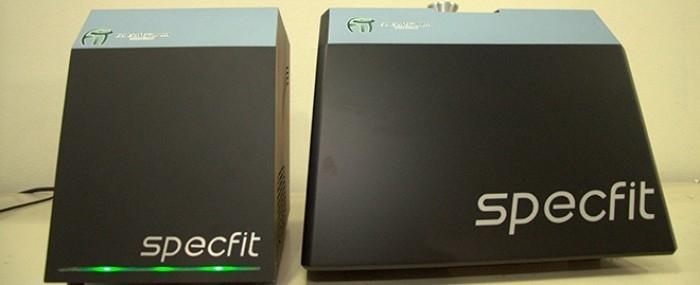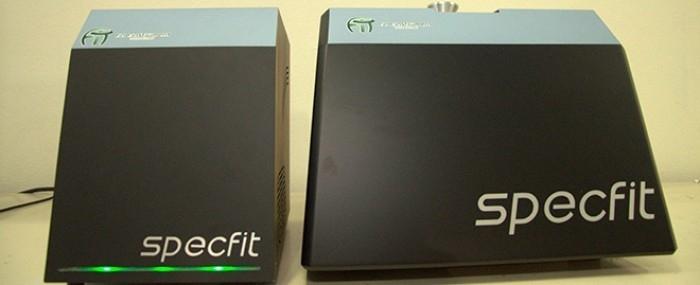
Credit: Fine Instrument Technology
The applications and benefits of nuclear magnetic resonance (NMR) in medicine are well known, but the technology is also used in other areas, such as agribusiness, where its applications include quality analysis of seeds and other products of animal and plant origin. NMR has recently reached the retail commerce sector, where it expedites the assessment of meat and fruit quality by supermarkets.
Fine Instrument Technology (FIT), a Brazilian company based in São Carlos (São Paulo State, Brazil), has developed a low-field NMR device that takes a few seconds to perform chemical and physical analyses of fruit, grains, olive oil, milk and meat, among other products. "The technology is different from that used in NMR devices for medical applications," says Daniel Consalter, one of FIT's managing partners.
The device, called SpecFIT, uses low-field NMR and does not produce images. It measures the sugar content of fruit, for example, in terms of the fade duration of an incident radio frequency pulse, which is then compared digitally with information in a database that translates the measurement into the chemical composition of the product.
In the specific case of SpecFIT, the company partners with the Magnetic Resonance Laboratory at Embrapa Instrumentation, a division of the Brazilian Agricultural Research Corporation (Embrapa) also based in São Carlos. This lab supplied the "template" for evaluation of food products. The same technology can be used to analyze beef in terms of fat content, moisture, tenderness, flavor and succulence.
In 2014, the company obtained funding from the São Paulo Research Foundation (FAPESP) Small Business Innovative Research Program (PIPE) to develop a small-scale NMR spectroscopy and imaging system mainly to supply research institutions. The first version was launched in 2015.
"FAPESP's PIPE program contributed to development of the imaging technology, as we were interested in the use of NMR in scientific research, especially analysis of grains," Consalter recalls.
The first version of the device, also funded by InovaCred, part of Desenvolve SP, the São Paulo State Government's development agency, is already being used by the Federal University of Rio de Janeiro's Alberto Luiz Coimbra Institute for Graduate Studies & Research in Engineering (COPPE-UFRJ) and some units of Embrapa. The second step was taken in 2016, in partnership with Embrapa.
FIT obtained funding from FAPESP to develop low-cost transportable commercial equipment for physical and chemical analyses of agricultural and food products. The project is in progress, with FIT's André de Souza Carvalho and Embrapa's Luiz Alberto Colnago as co-principal investigators.
The outcome will be the SpecFIT Food system, scheduled for launch at the end of 2017. The system will consist of a low-field NMR device with an antenna or probe, a radio transceiver, and a computer.
The NMR device sends a radio signal to the sample, which can be a food product, for example. The signal is captured by an antenna inserted into the sample. The antenna then emits a radio signal, which is digitized, analyzed and converted into product quality information. "The faster the signal from a piece of fruit disappears, the sweeter it must be, since signal fade is proportional to the viscosity of the water in the fruit, which in turn depends on the amount of sugar," Colnago explains.
FIT used the same technology in developing a device that analyzes the oil content of dende palm and seeds without having to dehydrate them first. "In the conventional approach, the measurement of oil content in samples requires an extraction method that can take up to 48 hours and entails the use of solvents and heat. With the new technology the entire procedure takes no more than three minutes, including sampling, weighing and measuring," Consalter says.
###
FIT has 15 employees and two partners: Daniel Consalter, who has a PhD in physics, and Silvia Azevedo, with a PhD in energy.
Media Contact
Heitor Shimizu
[email protected]
55-113-838-4223
@AgencyFAPESP
http://www.fapesp.br
Original Source
http://agencia.fapesp.br/company_innovates_by_using_magnetic_resonance_to_evaluate_food_quality/25725/





